The Electronic Intifada 3 April 2022
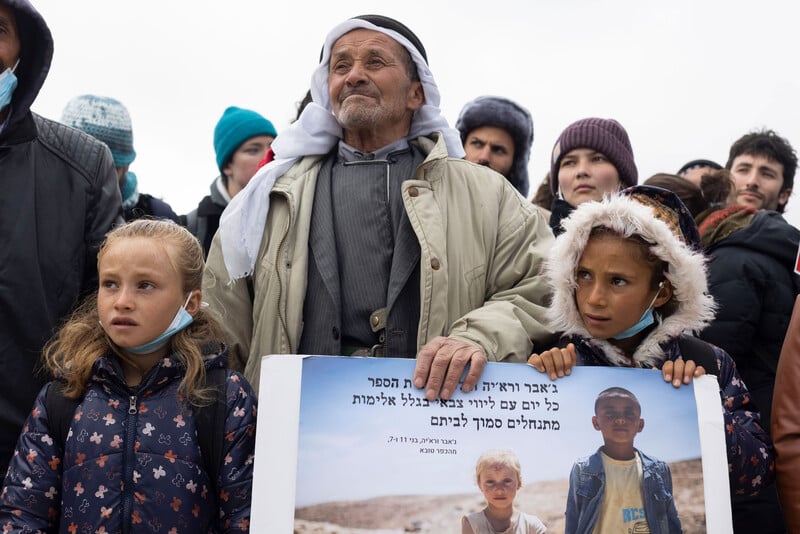
Palestinians and their supporters protest in front of the Israeli high court in Jerusalem on 15 March as the court held a hearing regarding Israel’s plans to expel more than 1,000 residents from their lands in Masafer Yatta, also known as the South Hebron Hills, in the southern West Bank. For decades, the Palestinian residents have been subjected to Israeli demolitions, raids and arrests and have had their lands declared as a military firing zone in an attempt to cleanse the area in favor of Israeli settlers.
ActiveStillsSeventeen Palestinians were killed by Israeli forces and armed civilians in the West Bank and Israel during March and 11 people in Israel were killed by Palestinians during the same period.
Israeli occupation forces killed four Palestinians during raids on Jenin refugee camp in the northern West Bank.
Abdullah Ahmad Thaib al-Husari, 23, and Shadi Jihad Nijm, 18, were killed during confrontations with Israeli forces in the camp on 1 March. Yazid al-Saadi, 22, and Muhammad Khalil Abu Atiya, 16, were shot and killed in the camp on 31 March.
Israeli soldiers shot college student Ammar Shafiq Abu Afifa, 19, in the head while he was walking with a friend in a forested area near his home in al-Arroub refugee camp in the southern West Bank on 1 March.
The friend, who survived, told B’Tselem, an Israeli human rights group, that the pair were approached by a soldier who shouted at them in Hebrew. Soldiers opened fire at the friends when they ran away.
Five days later, on 6 March, Israeli soldiers shot and killed Yamen Khanafsheh, 15, during a raid in Abu Dis on the outskirts of Jerusalem. The Israeli military attempted to justify the youth’s slaying by claiming that two people threw Molotov cocktails at a military post.
Defense for Children International-Palestine stated that “Israeli forces prevented Palestinian paramedics from treating Yamen, firing tear gas canisters at the ambulance as it approached the scene.”
Jerusalem killings
That same day, Karim Jamal al-Qawasmeh, 19, was shot and killed by Israeli police in Jerusalem’s Old City after allegedly stabbing and lightly injuring an officer.
Israeli police shot and killed another young Palestinian man, Abdelrahman Jamal Qassem, after he reportedly stabbed and moderately injured two officers in Jerusalem’s Old City on 7 March.
A video shared on social media documenting the incident shows an Israeli police officer shooting at Qassem as he is lying on the ground.
On 9 March, Ahmad Hikmat Seif, 23, succumbed to injuries sustained during a protest in solidarity with Palestinian prisoners in Burqa village in the northern West Bank the previous week.
Israeli forces killed three Palestinians on both sides of the 1949 armistice line demarcating Israel and the West Bank on 15 March.
Israeli forces fatally shot 27-year-old Sanad Salem al-Harbad in Rahat, a township in the Naqab desert in southern Israel.
In a joint operation by the Israeli army and Israel’s domestic spying and torture agency Shin Bet, undercover Israeli agents raided Rahat to arrest Palestinians from the occupied West Bank living in Israel without permits.
That same day, Israeli forces shot Alaa Muhammad al-Shaham, 24, in the head during an arrest raid on Qalandiya refugee camp near Ramallah and shot Nader Haitham Fathi Rayyan, 16, during an arrest raid in Balata refugee camp in Nablus.
Both al-Shaham and Rayyan died from their injuries.
Attacks in Israel
Four additional Palestinians were killed while carrying out deadly attacks inside Israel.
Muhammad Ghaleb Abu al-Qiyan, a 34-year-old Palestinian with Israeli citizenship, was killed by armed Israeli civilians after killing four Israelis in stabbing and car-ramming attacks in Beersheba on 22 March.
Five days later, on 27 March, relatives Ibrahim Ighbaria and Ayman Ighbaria – both Palestinians with Israeli citizenship from Umm al-Fahm – were shot and killed by Israeli forces after they gunned down two Border Police officers in Hadera, a city in northern Israel near Haifa.
The attack – the first of its kind in years – took place as four Arab foreign ministers, joined by their Israeli and US counterparts, participated in a normalization summit in southern Israel.
Israel’s security apparatus raised its alert status to the highest level after a Palestinian from the West Bank shot and killed five people in Bnei Brak, a Tel Aviv suburb, on 29 March.
An Israeli police officer and four other civilians, including two Ukrainian nationals residing in Israel, were killed during the shooting spree carried out by Dia Hamarsheh, a 26-year-old from Yabad town near the West Bank city of Jenin.
Hamarsheh’s father suggested to local media that his son was likely motivated by oppressive life under Israeli military occupation.
“The siege, the hard life, the daily killings, the news that we hear. This suffocates the youth. It makes things spiral out of control, like what happened to him,” Hamarsheh’s father said.
Another Palestinian, 30-year-old Nidal Jaafreh, was shot and killed by an Israeli civilian after allegedly stabbing a settler with a screwdriver on a bus near Efrat settlement in the West Bank.
Twenty-nine Palestinians have died by Israeli fire so far this year, including five children under the age of 18. Three more Palestinians died from other causes during Israeli military and police operations during the same period.
Injuries and restrictions
Around 225 Palestinians were injured by Israeli forces in the West Bank between 8-21 March alone, according to the UN monitoring group OCHA. Most of those injuries occurred during demonstrations against Israeli settlements.
OCHA added that Israeli forces imposed severe movement restrictions on Palestinians in several locations in the West Bank, including the closure of the main entrances to Burqa and al-Masudiya villages near Nablus.
Israel placed earth mounds and concrete blocks at those entrances after an Israeli settler was shot and killed by Palestinians nearby late last year. “These measures have forced about 8,000 Palestinians to rely on long detours, disrupting their access to livelihoods and services,” OCHA said.
Meanwhile, Israeli authorities demolished, confiscated or forced their Palestinian owners to raze nine homes and other structures in the West Bank, including East Jerusalem, on the pretext that they were built without a permit.
“As a result, 11 people were displaced, including seven children, and the livelihoods of more than 70 others were affected,” according to OCHA.
Two more homes were razed in Silat al-Harthiya near Jenin on 7 March in an act of collective punishment against the families of two Palestinians held by Israel over the killing of an Israeli settler in December.
Twelve people, including six children, were displaced as a result of the revenge demolition, according to OCHA.
The monitoring group reported at least 21 attacks by Israeli settlers against Palestinians in the West Bank during March and 95 Israeli military search and arrest operations in the territory.
Court freezes evictions
On 1 March, Israel’s highest court ruled that Palestinian families facing forced eviction may remain in their homes in East Jerusalem’s Sheikh Jarrah neighborhood until a final decision is made regarding property rights.
Settler organizations are seeking the expulsion of the Palestinian residents so they may be replaced by Jewish colonists.
Partially accepting the residents’ appeal, the Israeli daily Haaretz reported, the court is permitting them to stay while paying an annual amount to a trust account until a final resolution is reached.
That procedure can take “months to years,” a neighborhood committee stated.
Meanwhile, in Gaza, a baby girl died in late March after she was denied access to urgent medical care by Israeli authorities.
Fatma al-Masri, 19 months old, had a medical referral for treatment of a heart defect at a Jerusalem hospital. The girl’s health deteriorated during the several months during which she was denied permission to leave Gaza for treatment unavailable in the territory.
Since 2011, more than 70 patients, including 25 children, have died after their requests for exit permits were denied or delayed by Israel, according to Al Mezan, a human rights group in Gaza.
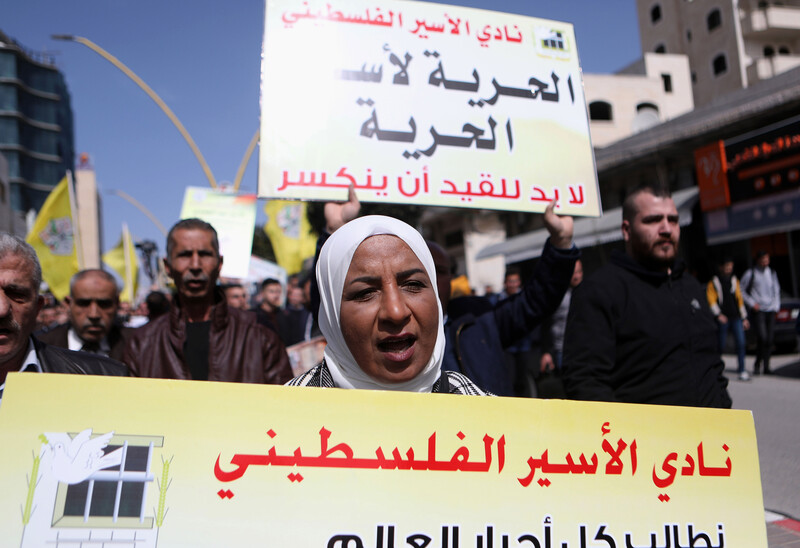
Palestinians rally in support of Palestinian political prisoners held in Israeli jails in the West Bank town of Hebron on 1 March.
APA images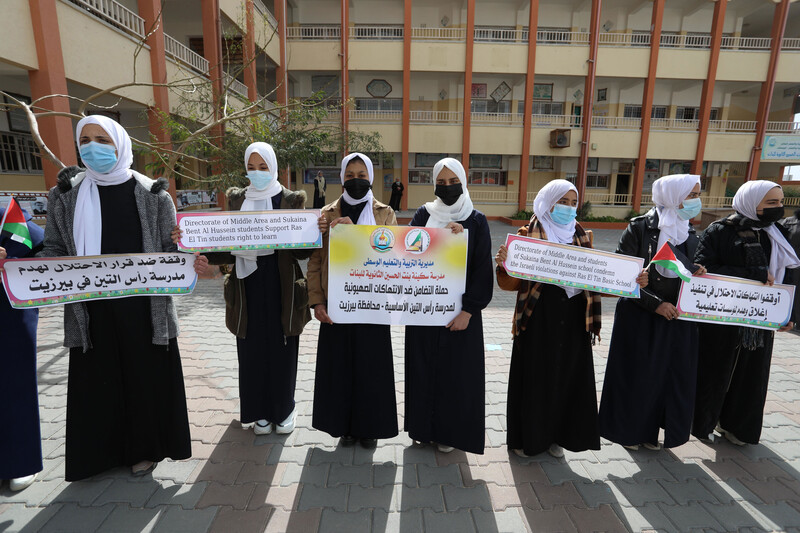
Palestinian students in Deir al-Balah, the central Gaza Strip, protest against an Israeli demolition order against the Ras al-Tin Basic school in the West Bank village of Birzeit, 3 March.
APA images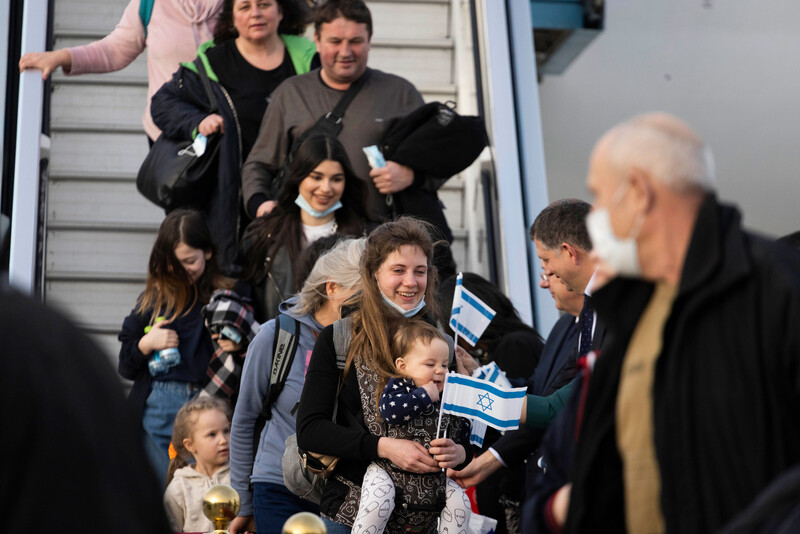
Ukrainian refugees descend from a plane at Ben Gurion International Airport near Tel Aviv on 6 March. The Israeli government and the Jewish Agency is involved on an ongoing mission to absorb Jewish immigrants from the war zones in Ukraine. According to media reports, The World Zionist Organization’s Settlement Division plans to place about 1,000 new portable structures for immigrants from Ukraine, some of them in the occupied West Bank and the Golan Heights.
ActiveStills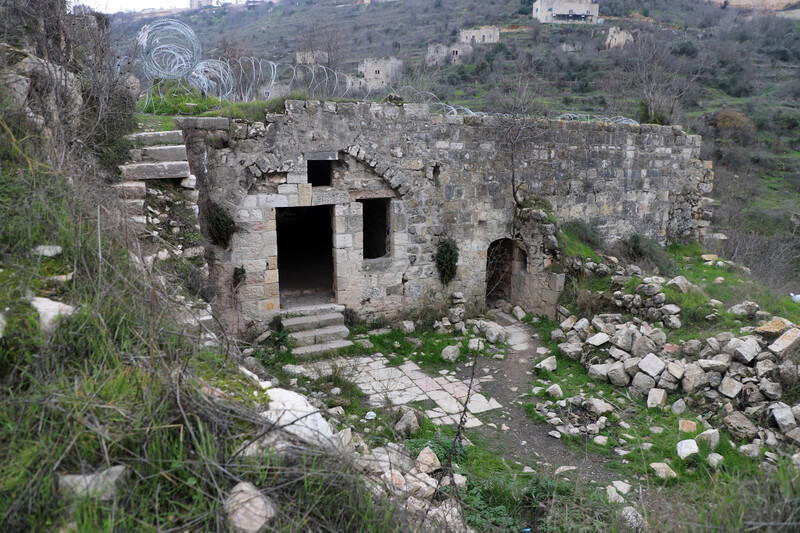
Abandoned buildings in the village of Lifta, on the western edge of Jerusalem, on 6 March. Lifta has been uninhabited since its Palestinian residents were driven out by Zionist forces in 1948. An Israeli luxury development scheme aims to turn Lifta into an exclusive Jewish residential area.
APA images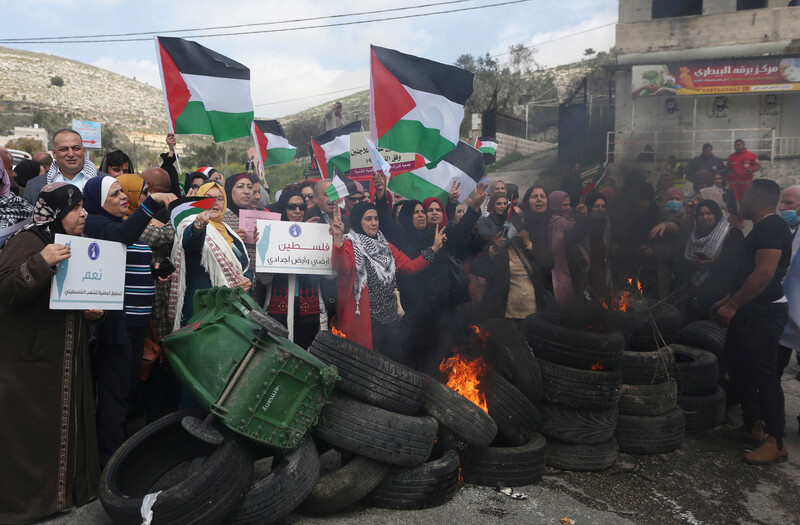
Palestinian women protest on International Women’s Day in Burqa village, near the West Bank city of Nablus, on 7 March.
APA images
Palestinian pilgrims gather in the Nuseirat camp in central Gaza before heading to the Rafah crossing between Gaza Strip and Egypt on 14 March. For the first time in two years, hundreds of Palestinian Muslims from Gaza will be able to perform the religious rituals of Umrah in the sacred city of Mecca.
APA images
Palestinians attend an Israeli high court hearing in Jerusalem on 15 March regarding Israel’s plans to expel more than 1,000 residents from their lands in Masafer Yatta, also known as the South Hebron Hills, in the southern West Bank.
ActiveStills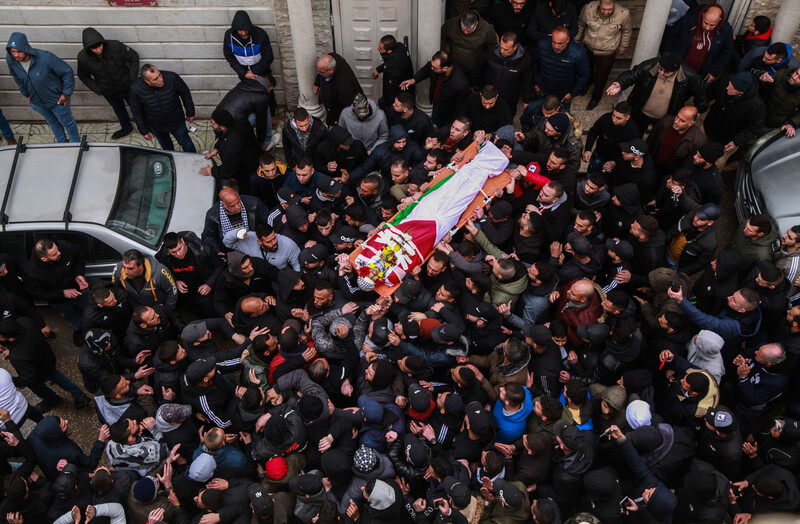
Mourners carry the body of Alaa al-Shaham during his funeral at Qalandiya camp near the West Bank city of of Ramallah on 15 March. The 24-year-old was killed by Israeli fire in the camp earlier that morning.
APA images
Palestinians protest in solidarity with Iyad Omar, an ill Palestinian held prisoner by Israel, in the West Bank city of Jenin on 17 March.
WAFA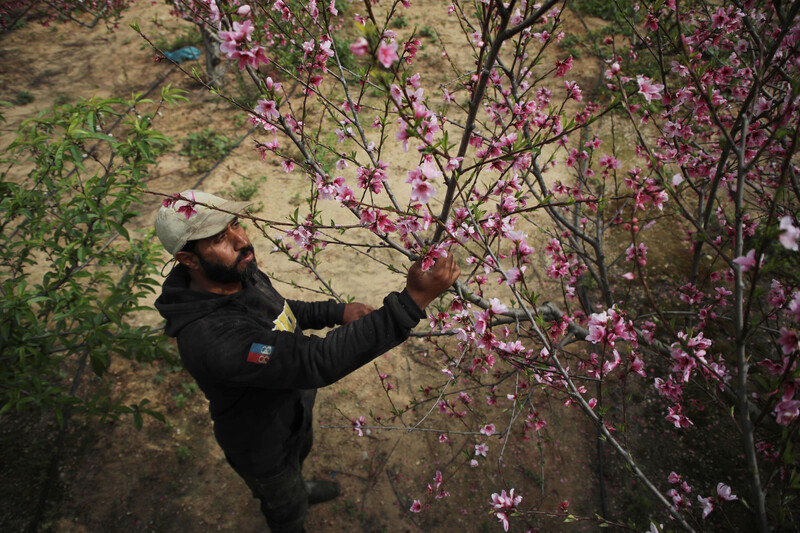
A peach tree blooms in Beit Hanoun, northern Gaza Strip, on 19 March.
APA images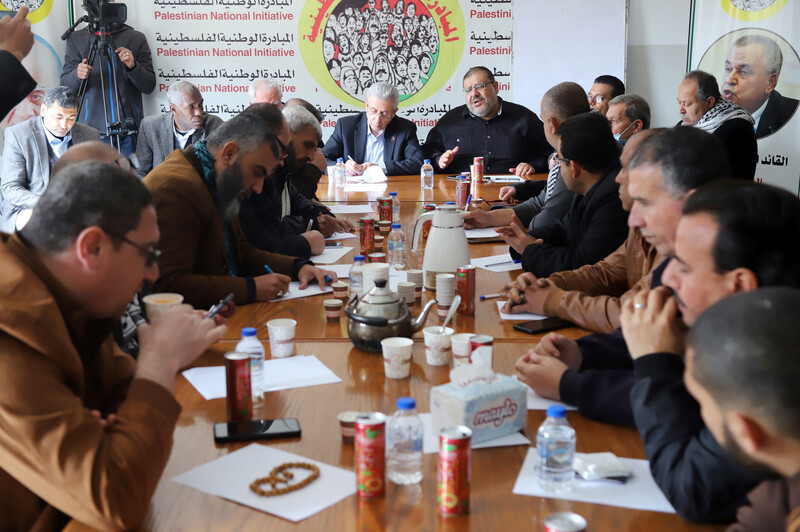
Mustafa Barghouti, the general secretary of the Palestinian National Initiative party, meets with members of the national and Islamic forces in Gaza City on 20 March. The Palestinian prisoners movement announced that prisoners in Israeli jails will embark on an open-ended hunger strike starting 25 March in protest of the prisons administration’s escalated measures against them.
APA images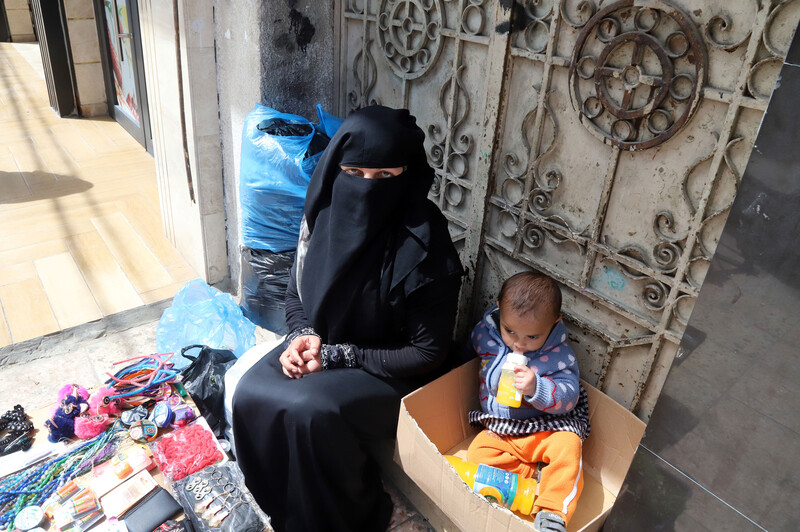
Zain Huthut sells mint and trinkets on a Gaza City street on Mother’s Day to improve the economic conditions of her family of seven, 21 March.
APA images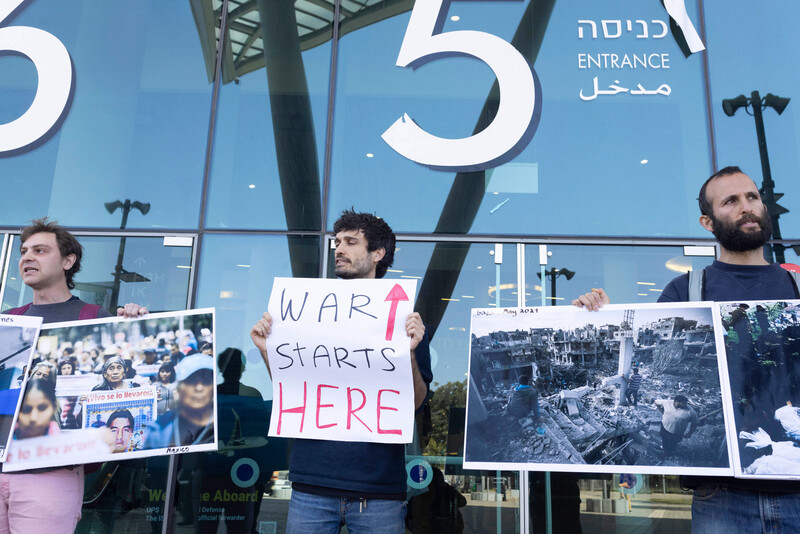
Human rights activists demonstrate at the entrance to the ISDEF22 weapons and security equipment expo in Tel Aviv on 22 March.
ActiveStills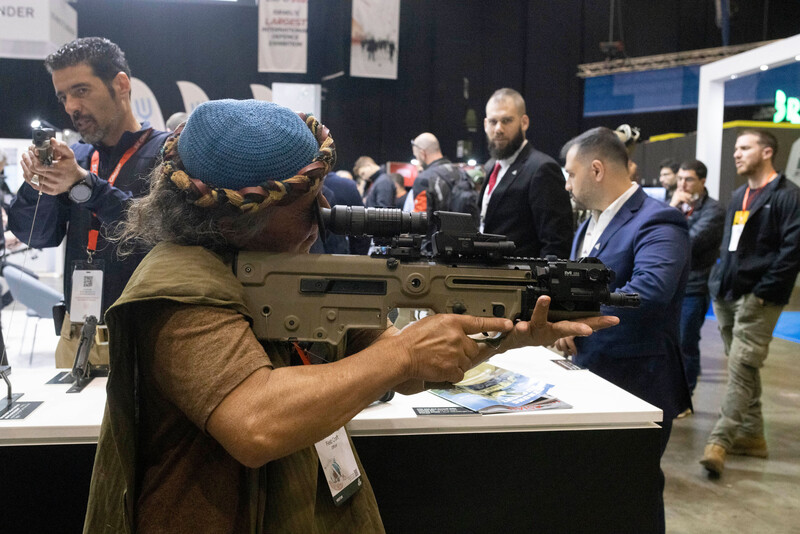
Inside the ISDEF22 arms exhibition in Tel Aviv on 22 March.
ActiveStills
A Palestinian woman makes jameed in Masafer Yatta, south of the West Bank city of Hebron, on 23 March. Jameed, a dry fermented yogurt made from sheep or goat’s milk, is the primary ingredient used to make mansaf, the national dish of Jordan.
APA images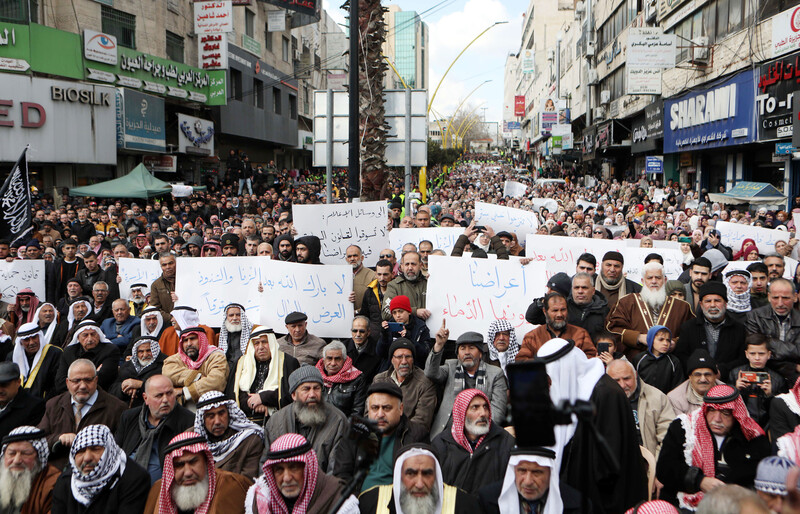
Palestinian supporters of the Salafi group Hizb ul-Tahrir protest against Convention on the Elimination of All Forms of Discrimination against Women (CEDAW) in the West Bank city of Hebron on 23 March. Adopted by the UN General Assembly in 1979, the convention is often described as an international bill of rights for women.
APA images
Demonstrators rally in the village of Sawa al-Atrash in the Naqab region of southern Israel on 26 March to commemorate Land Day. The annual commemoration marks a strike and wave of demonstrations in 1976 during which Israeli forces shot and killed six people during protests against land confiscation.
ActiveStills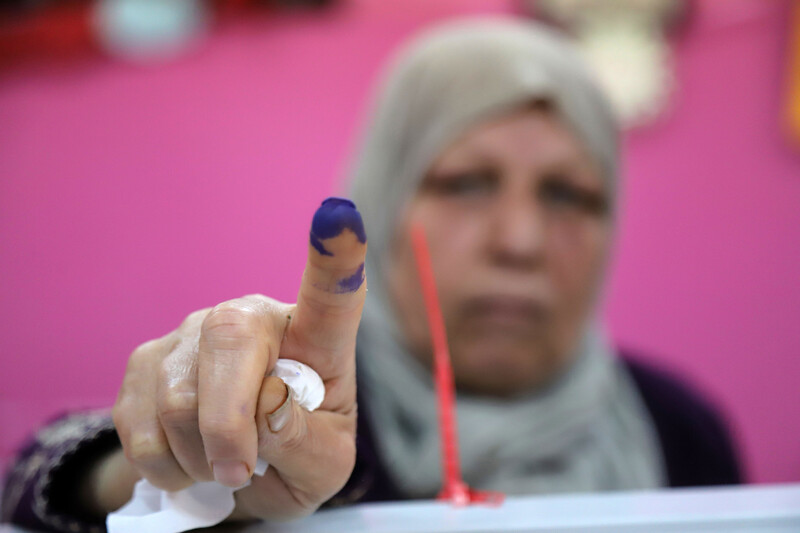
A Palestinian woman casts her ballot for municipal and local governorate councils in the West Bank city of Ramallah on 26 March. Polls opened that morning for the second phase of local elections at 50 Palestinian localities in the West Bank.
APA images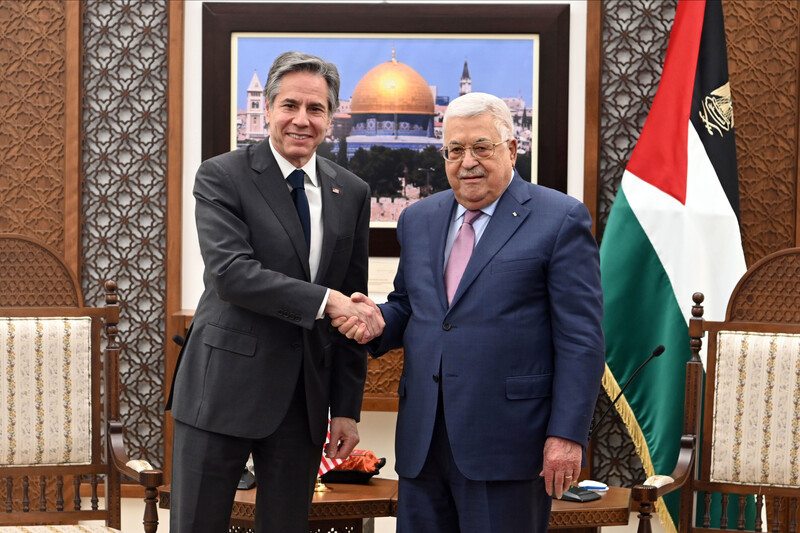
Palestinian Authority President Mahmoud Abbas meets with US Secretary of State Antony Blinken in the West Bank city of Ramallah on 27 March.
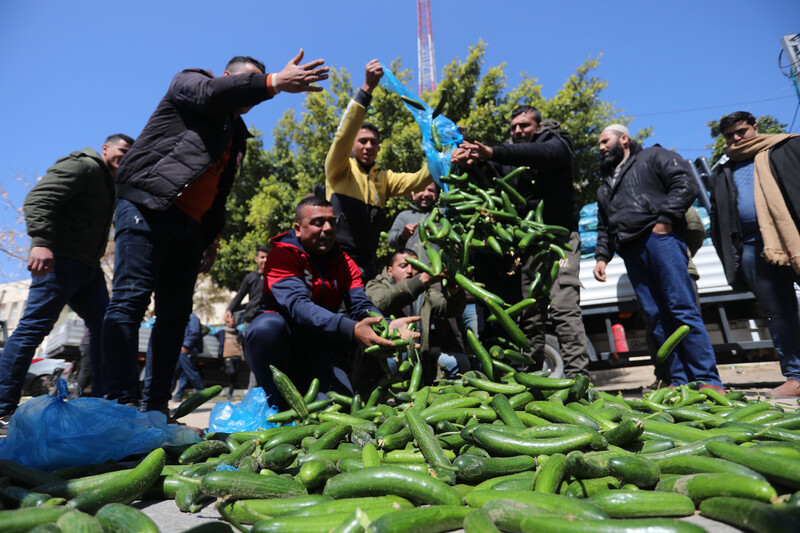
Palestinian farmers in Gaza City protest against the decision to stop exporting vegetables to the West Bank to reduce their cost in Gaza on 27 March.
APA images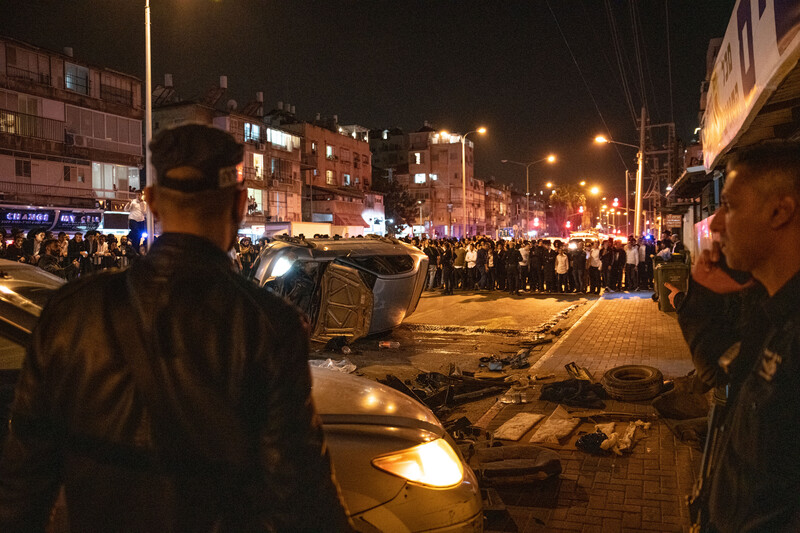
The overturned car used by Palestinian assailant Dia Hamarsheh in Bnei Brak, the Tel Aviv suburb where five people were killed in a shooting attack, 27 March.
SIPA USA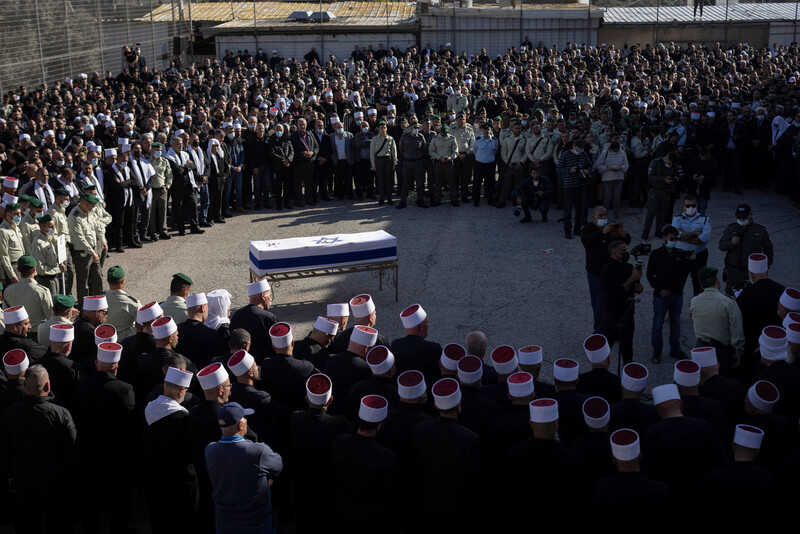
Mourners gather around the coffin of Yazan Falah, a Druze officer with the Israeli Border Police, during his funeral in the village of Kisra-Sumei on 28 March. Falah was killed in a shooting attack by two Palestinian gunmen in Hadera, a city in central Israel the previous night.
ActiveStills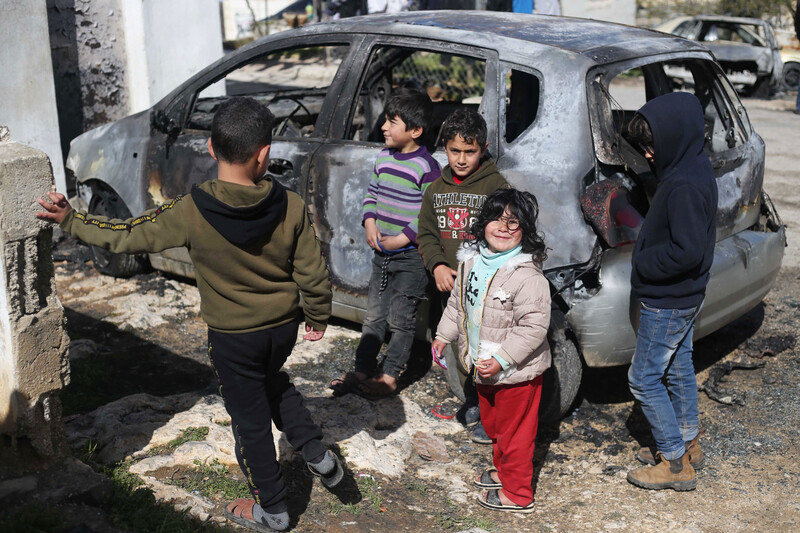
Palestinian children play near a car burned in an arson attack by Israeli settlers near the West Bank village of Jalud, southern Nablus, on 28 March.
APA images
Israeli soldiers patrol the area in the West Bank city of Jenin from where Dia Hamarsheh reportedly left before killing five people in Bnei Brak, a suburb of Tel Aviv, 30 March.
APA images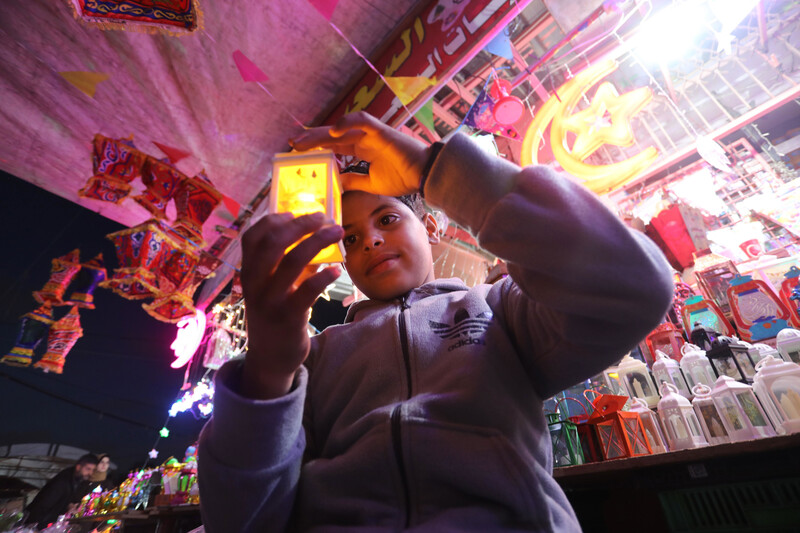
Palestinians shop at a Gaza City market ahead of Ramadan on 30 March.
APA images
Palestinians mourn over the body of Sanad Abu Atiya, 16, killed by Israeli forces, during his funeral in the West Bank city of Jenin on 31 March.
APA images

